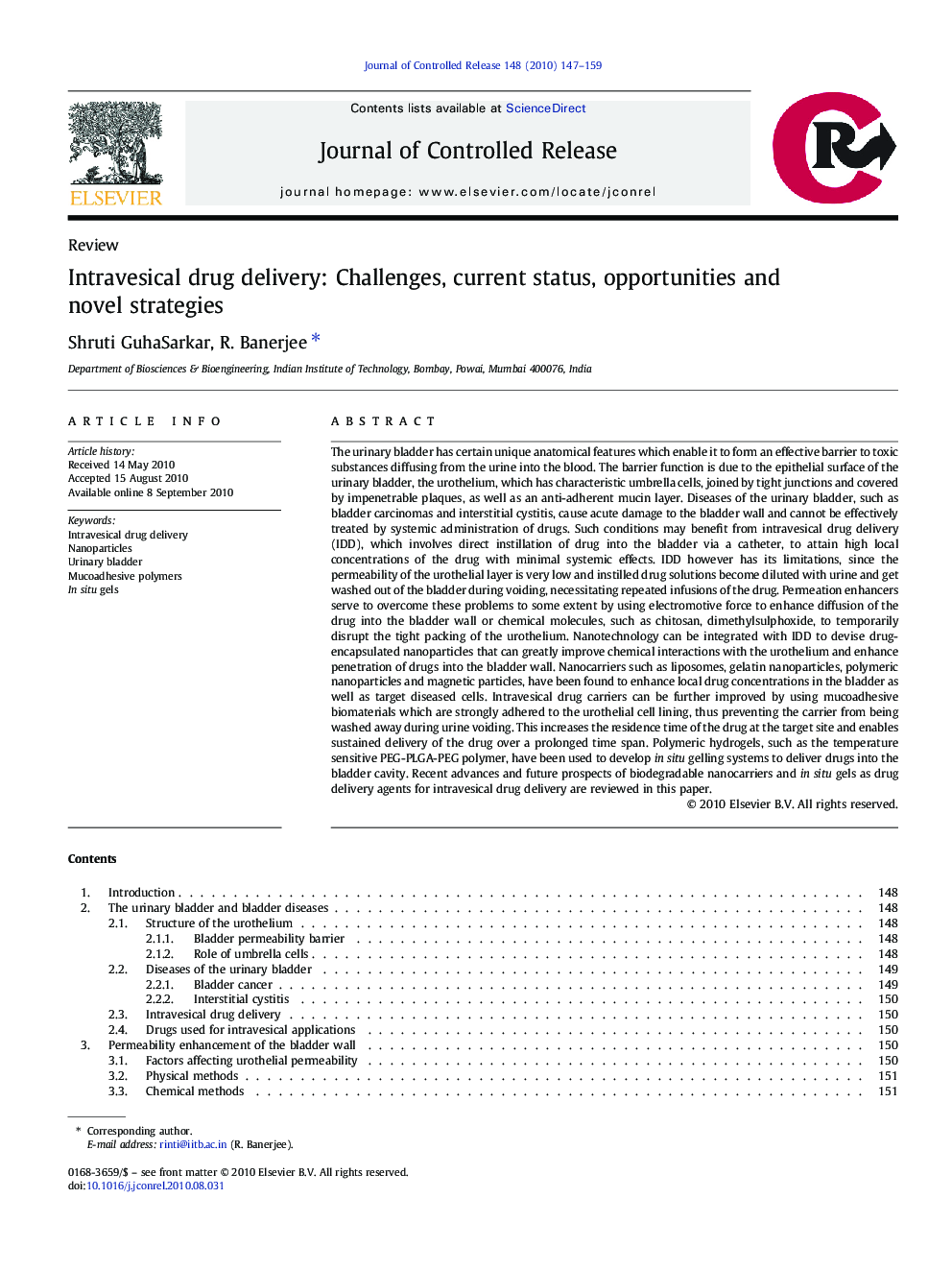| کد مقاله | کد نشریه | سال انتشار | مقاله انگلیسی | نسخه تمام متن |
|---|---|---|---|---|
| 1425786 | 986780 | 2010 | 13 صفحه PDF | دانلود رایگان |

The urinary bladder has certain unique anatomical features which enable it to form an effective barrier to toxic substances diffusing from the urine into the blood. The barrier function is due to the epithelial surface of the urinary bladder, the urothelium, which has characteristic umbrella cells, joined by tight junctions and covered by impenetrable plaques, as well as an anti-adherent mucin layer. Diseases of the urinary bladder, such as bladder carcinomas and interstitial cystitis, cause acute damage to the bladder wall and cannot be effectively treated by systemic administration of drugs. Such conditions may benefit from intravesical drug delivery (IDD), which involves direct instillation of drug into the bladder via a catheter, to attain high local concentrations of the drug with minimal systemic effects. IDD however has its limitations, since the permeability of the urothelial layer is very low and instilled drug solutions become diluted with urine and get washed out of the bladder during voiding, necessitating repeated infusions of the drug. Permeation enhancers serve to overcome these problems to some extent by using electromotive force to enhance diffusion of the drug into the bladder wall or chemical molecules, such as chitosan, dimethylsulphoxide, to temporarily disrupt the tight packing of the urothelium. Nanotechnology can be integrated with IDD to devise drug-encapsulated nanoparticles that can greatly improve chemical interactions with the urothelium and enhance penetration of drugs into the bladder wall. Nanocarriers such as liposomes, gelatin nanoparticles, polymeric nanoparticles and magnetic particles, have been found to enhance local drug concentrations in the bladder as well as target diseased cells. Intravesical drug carriers can be further improved by using mucoadhesive biomaterials which are strongly adhered to the urothelial cell lining, thus preventing the carrier from being washed away during urine voiding. This increases the residence time of the drug at the target site and enables sustained delivery of the drug over a prolonged time span. Polymeric hydrogels, such as the temperature sensitive PEG-PLGA-PEG polymer, have been used to develop in situ gelling systems to deliver drugs into the bladder cavity. Recent advances and future prospects of biodegradable nanocarriers and in situ gels as drug delivery agents for intravesical drug delivery are reviewed in this paper.
Graphical AbstractThe efficacy of intravesical drug delivery can potentially be improved by the use of strategies such as drug-conjugated biodegradable nanocarriers, mucoadhesive polymers and in situ gelling systems.Figure optionsDownload as PowerPoint slide
Journal: Journal of Controlled Release - Volume 148, Issue 2, 1 December 2010, Pages 147–159